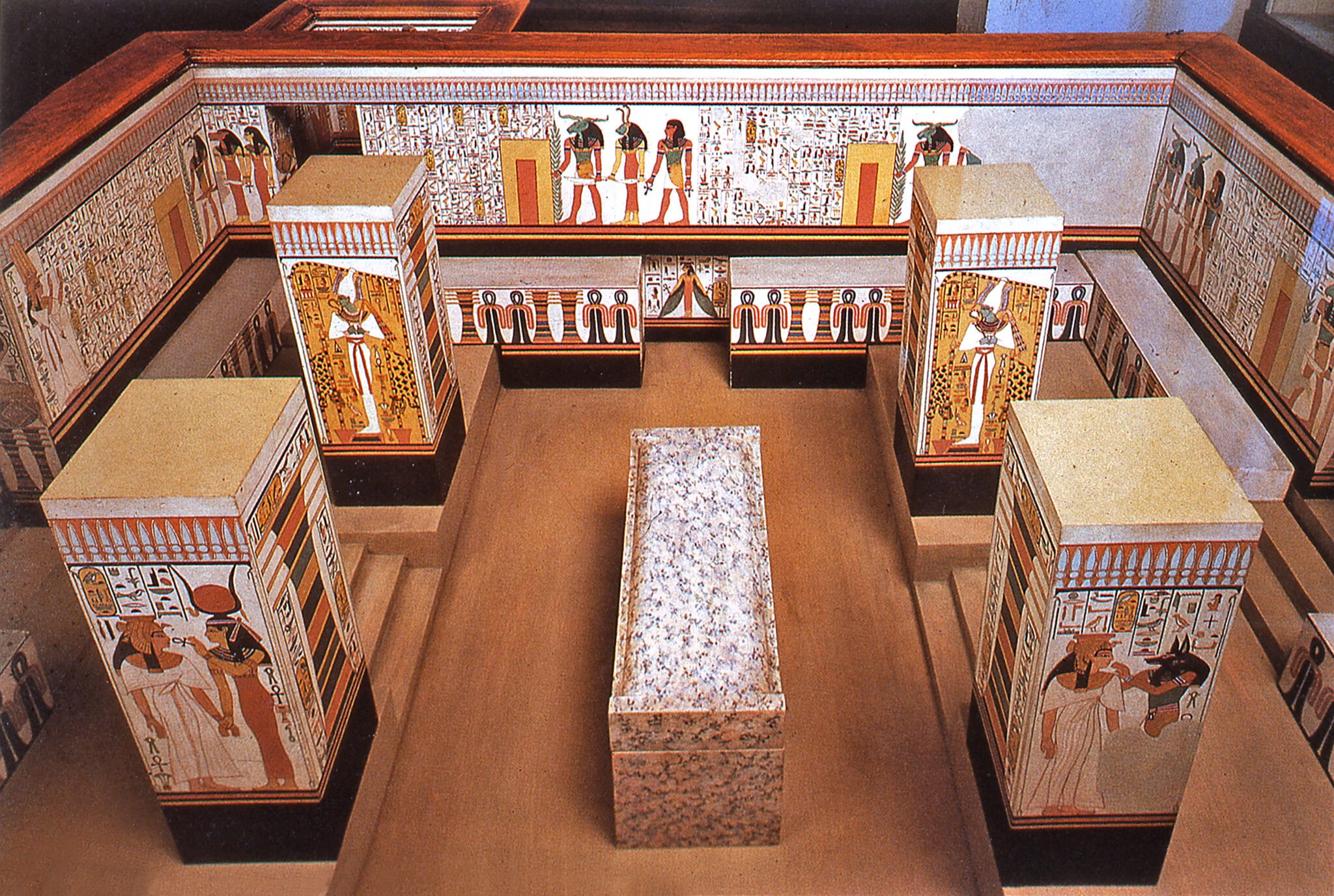
The Kimbell Art Museum presents a sweeping showcase of female power and influence during the height of ancient Egyptian civilization in the exhibition Queen Nefertari’s Egypt, on view through March 14, 2021.
At the heart of the exhibition is Queen Nefertari, who was renowned for her beauty and prominence.
“What’s interesting to note about the role of women in society is that from a legal point of view, they were equal to men. They could own property, they could run their own businesses. They could stand in court and bring cases to court,” Jennifer Casler Price, curator of Asian, African and Ancient American Art, said in a preview of the exhibit.
Nefertari was one of the most celebrated queens of ancient Egypt alongside Hatshepsut and Cleopatra.

“She was very intelligent. She could read and write, and she actually aided [Pharaoh Ramesses II] in some of his diplomatic work in corresponding with other people throughout the kingdom,” Casler Price said.
Drawn from the Museo Egizio in Turin, Italy, one of the most important and extensive collections of ancient Egyptian works in the world, the objects on display highlight the role of women – goddesses, queens and artisans – in Egypt’s New Kingdom period (c. 1539–1075 B.C.).
Installation of the exhibition itself presented challenges because of the COVID-19 pandemic.
In a normal installation staff member from the Museo Egizio would have been in Fort Worth to help unpack the objects, But with travel bans and quarantines that was impossible.
Enter the darling technology of COVID-19 – Zoom.
So around a dozen people in Fort Worth would be on a Zoom call with staff members at the museum in Italy, being guided from overseas in the unpacking and set up, Casler Price said.
It took five weeks, she said, starting at 6 a.m. because of the time difference.
“And it was scary. We’d never worked with these people before. They’d never worked with us,” she said. But it came together, and the worker from the Italian museum praised the display, saying they were “touched by the love that you have for our Nefertari.”
Until the early 1900s, Nefertari was known only through a few finds, such as sculptures, tomb paintings and hieroglyphs related to Ramesses II.
In 1904, Italian archaeologist and then director of the Museo Egizio, Ernesto Schiaparelli, uncovered Nefertari’s tomb in the Valley of the Queens, located near the ancient capital of Thebes.
The tomb was built by the artisans from Deir el-Medina around 1250 B.C. and one section of the exhibit displays tools used to build monuments and also smaller finer items for display in tombs, temples and even in home shrines.
Of special interest are a wooden mallet and chisels used by stone masons, which might easily be overlooked by visitors stunned by more magnificent displays.
Casler Price had seen the exhibit in other venues but was mostly taking notes and visualizing how it could be stages at the Kimbell but not closely inspecting the objects.
But when Kimbell staff began to unpack the items to displayed, the tools caught her eye.
One of the most humble pieces in the show gave her cold chills.
“You can actually see the indentations of where it was hammering the chisel, but also if you go back and you look at the handle, there’s a kind of a patina on it, literally from somebody handling it.” Casler Price said. “And when you think about the fact that somebody 3,000 years ago was holding this in their hand and actually using it, it just really brings the artisan village to life.”
During its nearly 50-year history, the Kimbell Art Museum has presented several significant exhibitions of Egyptian art, including Egypt’s Dazzling Sun: Amenhotep II and His World (1992), Gifts of the Nile: Ancient Egyptian Faience (1998), Quest for Immortality: Treasures of Ancient Egypt (2002) and Hatshepsut: From Queen to Pharaoh (2006), which focused on one of the most enigmatic rulers in Egyptian history. Among the Kimbell’s collection are three superb examples of ancient Egyptian statuary, including Portrait Statue of Amenhotep II, which was recarved for Ramesses II, Nefertari’s husband, around 1250 B.C. and acquired in 1982.
Tickets
Admission to Queen Nefertari’s Egypt
- $18 for adults
- $16 for seniors and students
- $14 for ages 6–11
- Free for children under 6.
Admission is half-price all day on Tuesdays and after 5 p.m. on Fridays.
Admission is always FREE to view the museum’s permanent collection.
The exhibition is organized by the Museo Egizio, Turin, and StArt, in collaboration with the Kimbell Art Museum. It is supported by the Texas Commission on the Arts, the Fort Worth Tourism Public Improvement District and the Consolato Generale D’Italia Houston. Promotional support is provided by American Airlines, NBC 5 and PaperCity.
The organizing curator at the Kimbell Art Museum is Jennifer Casler Price, curator of Asian, African and Ancient American art.
Includes material from Kimbell news releases






